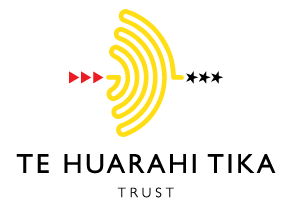SPECTRUM
What is radio the spectrum and how is it managed?
Radio spectrum is part of the electromagnetic spectrum. While an electromagnetic wave is a physical thing, the electromagnetic spectrum and the radio spectrum are concepts – they could perhaps be described as catalogues of certain types of electromagnetic waves. Specifically, “the radio spectrum” is the name for electromagnetic waves that have frequencies between 3 kHz and 300 GHz.
There are naturally occurring electromagnetic waves (for example visible light from the sun) but all the electromagnetic waves of interest here are artificially generated and received through various types of technology. The term ‘airwaves’ is a misnomer. Electromagnetic waves can propagate in a vacuum. – they can travel through deep space. They are physically distinct from, and not related to, sound waves that require a medium such as air or water to propagate.
The Crown has managed the radio spectrum since 1903, when it enacted legislation that made it an offence to establish a station or plant for the purpose of sending or receiving wireless telegraphy without consent.
The management function now involves the provision of rights to use specific parts of the spectrum (that is, rights to transmit and receive specific frequencies of radio waves). Management is necessary because if not coordinated radio waves may interfere with each other, negating their effective use.
The rights to use come in several forms:
· Radio licences are provided to enable transmission and/or reception from a specific site. Typical users of radio licences are land mobile radio and point-to-point links.
· General user licences allow anyone to use the frequency within prescribed power limits. WIFI, garage door openers and cordless phones are examples of this type of use.
· Management rights enable the right-owner to utilise that range of frequencies anywhere within NZ. Management rights are typically used for cellular networks as they enable the network owner to build and manage their network to their own requirements. This gives flexibility to add new cell sites as required, and to determine the appropriate technology to be used.
The choice between the use of radio licences or management rights is a matter of administrative convenience/efficiency for the Crown. Management rights are typically, but not always, allocated commercially through an auction or similar process.
The spectrum that is actively administered by the Crown encompasses a wide range of uses. Familiar personal uses include cellphones, AM/FM radio, GPS, cordless telephones, WIFI, bluetooth, garage door openers, RFID tags, television (terrestrial and satellite) and remote-control toys. There are a variety of commercial uses including land mobile radios, walkie-talkies, radio-microphones, point-to-point links, studio-to-transmitter links and ‘smart’ electricity meters. Beyond this there are many uses in defence, emergency services, the aeronautical industry (air traffic control, radar, and instrument landing systems), marine users (both recreational and commercial), meteorology (rain radar), science and industry.
While these uses are relatively stable over short periods, in the longer term the allocations for particular uses change with technology. A current example is the changing use of the 700 MHz band. This band was previously part of the band allocated for use by television broadcasters, in 2014 it was made available for use by cellular mobile services. Frequencies originally deployed with 2G cellular technologies are being redeployed for 4G technologies. These trends will undoubtedly continue as new technologies are developed and older technologies no longer provide the services requited.
Of the 300 GHz that is managed by the Crown approximately 1 GHz is allocated for use by mobile phones (that is 1 part in 300 or 0.33%).

